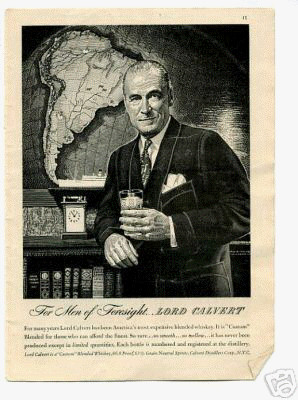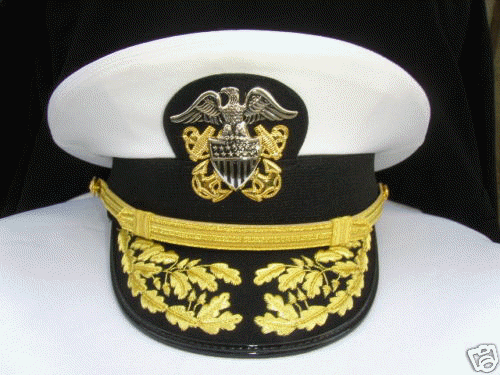The artistic Irish sailor - War Stories Ain’t All Alike - # 4
Find him lists
Let’s call this worthy seaman by a very fictitious name, McMercer. That should reassure everyone, particularly McMercer, that someone is looking out for his safety and well being. McMercer is still on the "find-him" lists of several notables. He is a good guy and deserves protection.

Assigned to NNMC for duty
McMercer was assigned for duty to the prestigious National Naval Medical Center, located close to Washington, D.C. That was one of the Navy’s errors of judgment perhaps, but, after all, McMercer was as intelligent as they come in the Navy, so what better place was there to stick such a bright guy other than right under the noses of all of the big brass?
The Captain into whose charge McMercer was placed must have been a leg or two up on those in headquarters who had given McMercer over into the Captain’s care. He interviewed the incoming sailor and promptly assigned him to duty cleaning cages in the laboratory’s research animal room.
While Seaman McMercer had a good and a long memory, the Captain did not. Out of the Captain’s sight, McMercer became lost from the Captain’s mind, a situation to be remedied soon enough.

Red, white, and (maybe) blue
McMercer’s animal room was amply populated with laboratory rats. There were white rats, brown rats, red rats, rats with speckles, and rats having long tails, and rats having short tails. McMercer loved his rats. He mothered them and fathered them. He tried to get the red ones to breed with the white ones, all the while keeping an eye peeled for a chance blue rat. McMercer was a seaman with plans and ideas. It was a red, white, and blue rat that he was after.
In addition to his desire to be involved in patriotic research, McMercer had a constant need to vocalize. That is a compulsion common to many Irishmen even though they usually cannot sing a note without fracturing something, either internal or external. McMercer, thus, sang to his rats, sang to himself, and warbled to the vast world outside of the animal room window. McMercer’s window was high up on the wall directly over the cage-cleaning bench, for the animal room was in the building’s basement.

A missing revelation
As McMercer was crooning away one cage-cleaning summer morning, the Captain’s legs walked by the window. The window was open. Bad rat smell and McMercer’s bad singing wafted out. The Captain’s legs backtracked. Then the Captain’s head, quite upside down, gilded hat held on by a firm hand, glared in through the open window. (Captains never squat.) McMercer lowered his singing volume and glared back at this upside down head.
"Who are you?" asked the upside down head.
"God, sir," replied McMercer in a soft and respectful tone of voice.
McMercer immediately sensed that he had some outside duties to perform the moment he saw that upside down head disappear and the Captain’s legs heading for the animal room door.
As McMercer explained later, "It would have been a shame for the Captain to rush on into the animal room expecting to experience a revelation and, there, find only McMercer."

The art of whiskey
To get on with the artistry of Seaman McMercer, let all of us who saw them remember the style and content of those ubiquitous whiskey ads that populated the back pages of high-circulation newsmagazines. Invariably, those ads featured photographs of very stern-faced businessmen standing next to tables of superbly crafted and polished wood. On each table would be the featured whiskey bottle and a double-shot glass containing several ice cubes and some warmly brown whiskey. Books, oversized globes of the world, and other serious accessories completed the pictures.
One day, McMercer, a part-time reader as well as a full-time student of the world, spotted one of those razor-sharp, full-color, leap-off-the-paper, back-cover whiskey advertisements on a magazine that had been left kicking around the main laboratory waiting room. Instantly McMercer recognized the face of the model used to portray the stern-looking businessman. Right there, dressed out smartly in a navy blue, double-breasted jacket, was the image of the National Naval Medical Center’s commander – the Admiral himself.
Off of that magazine came its back cover. McMercer, now fully inspired, shucked off his guise as a sailor and instantly became the second coming of Leonardo da Vinci. He spent seven dollars on some paints and sharply pointed paint brushes. In his barracks room he labored with the concentration and divine guidance afforded all true artists. At last, his masterpiece was done.

and a gold-bedecked uniform hat
McMercer, much as are so many great artists when they first step into art, was fearful that his first masterpiece might be rejected by the public should he call too much attention to it. Quietly, he wandered into the main lobby of the Medical Center at 3 a.m. on a Sunday morning. While the desk-duty sailor dozed away, McMercer slipped his new version of the Admiral over the old version in the Admiral’s portrait frame. There, his new painting remained on display until some visiting big wheel questioned the propriety of admirals so blatantly showing off their drinking habits.
Yes. The businessman’s suit had become the Admiral’s uniform, complete with all of the stripes and gold gilding, plus all of the many campaign ribbons worn by the admiral. A marvelously gold-bedecked hat sat on the table between the whiskey items and the world globe.

It is time to pursue an education
When McMercer said "so long" to the Navy, he headed on up to Canada – to pursue some education and learn life's lessons, as he described it.







